

Azusa StreetRiders International
The Apostolic Motorcycle Ministry of Jesus Christ ~ Official Site

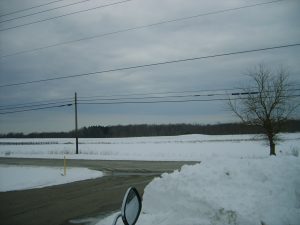
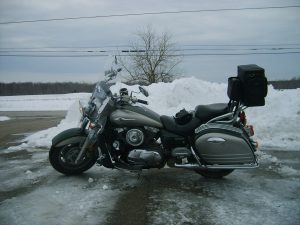
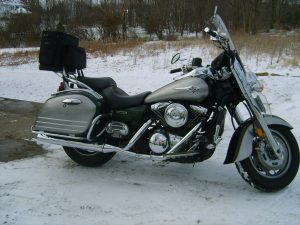

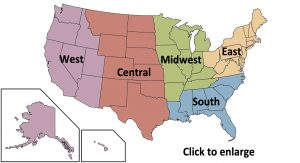
Information for State Watch is from the AMA
California
Senate Resolution 63, introduced by state Sen. Anna Caballero promotes increased public awareness on the issue of motorcycle profiling. The resolution also encourages collaboration and communication between the motorcycle community and local and state law enforcement agencies to engage in efforts to end motorcyclist profiling. It also urges state law enforcement officials to include statements condemning motorcyclist profiling in policies training materials.
Wisconsin
ABATE of Wisconsin reports that two state senators are circulating a draft bill that would allow retailers to dispense all blends of fuel through one pump nozzle. The bill (LRB2170/P1) would apply to fuel blends up to 15 percent ethanol (E15). The AMA joins ABATE of Wisconsin in opposing this bill, which would dramatically increase the likelihood of inadvertent misfueling by motorcyclists. No motorcycles or ATV’s sold in the United States are certified by the EPA to operate on fuel containing more than 10 percent ethanol (E10).
Georgia
The Department of Driver Services Georgia Motorcycle Safety Program received a $83,464 grant from the Governor’s Office of Highway Safety to help reduce motorcycle fatalities, increase driver awareness of motorcycles and educate motorcycle riders about safety initiatives. The grant allows the safety program to continue promoting state and national safety initiatives. The GMSP promotes driver awareness of motorcycles on the highways, rider education at 40 locations across the state and motorcycle safety initiatives. The GSMP operates motorcycle training for new and experienced riders. Classes focus on riding a motorcycle legally and safely.”We want to ensure everyone has access to proper rider education,” said Holly Hegyesi, GSMP Program Manager. “Motorcycle safety classes are essential for new and experienced riders, alike. Almost one third of motorcycle fatalities involve a rider without a valid license.”
Missouri
Motorcyclist in Missouri will be required to wear helmets while riding, at least for another year, after the states legislature declined to overrule Gov. Mike Parson’s veto of a bill that would have repealed the current motorcycle helmet law. Parson cited safety concerns raised by the state Department of Transportation in issuing the veto. Freedom of the Road Riders supported the bill, which would have provided riders and passengers 18 or older the option of going without a helmet,if they carried health insurance.
PRESIDENT SIGNS SCENIC BYWAYS ACT
The Program is Set To Revive
President Donald Trump signed H.R. 831,the Reviving America’s Scenic Byways Act, on Sept 22,2019.
The bill requires the Secretary of Transportation to request nominations for, and make determinations regarding, roads to be designated under the national scenic byways program, which has been closed for six years. The AMA was part of the coalition that helped create this program in 1991 and played an active role in the efforts to revive the program. The program provides resources that help communities along designated byways benefit from the tourism they generate, while preserving the characteristics of the roads that made them great destinations in the first place. Even before the bill passed, officials said they were prepared to seek National Scenic Byway designation for 44 roads in 24 states. Michael Theodore National Road Captain

There are No upcoming events at this time. Please remember for 2020 when planning an event to let the board know of your dates and event information. So that it can be posted on our National website along with our face book pages.
Michael Theodore
National Road Captain
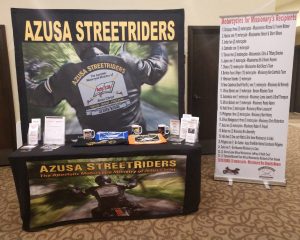
September Ohio UPCI Men’s Conference was truly a huge Blessing and a big success. We made a lot of new contacts who stopped by to tell us thank you for what we do. We were busy explaining to potential members that not only do we support our missionaries but we help members with biker Sunday’s to reach out to the bikers that others don’t know how to reach. We had quite a few pastors stop by to say they support what we do. ASR was blessed by the Ohio district Men’s conference as they gave us a donation for M4M.
Michael Theodore
Ohio Coordinator

There are No upcoming events at this time. The Fall retreat In Texas has been cancelled. Please remember for 2020 when planning an event to let the board know of your dates and event information. So that it can be posted on our National website along with our facebook pages.
Michael Theodore National Road Captain
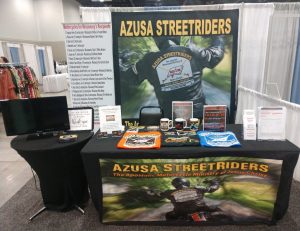

General conference 2019 was blessed and a huge success. One of the things that made me proud to be an Azusa-SteetRider was when Brother Howell and some of the missionaries stopped by to tell us thank you for what we do. We were busy all week explaining to potential members that not only do we support our missionaries but we help members with biker Sunday’s to reach out to the bikers that others don’t know how to reach. We had quite a few pastors stop by to say they support what we do. One of the highlights was meeting one of the advisers Brother Reyes from the Azusa-streetriders Philippines. They are looking forward to us visiting with them so if anyone is interested in heading to the Philippines within the next 2 years save up and lets start planning a trip. I would encourage anyone that has the time to help with the ASR booth at next years General Conference in Saint Louis MO to come out and help, you will be blessed.
Michael Theodore National Road Captain


The First Step to addressing a problem is to first acknowledge that you have a problem. I will admit to you all that I do not a serious non-drinking problem. I have always hydrated before,during and after a ride.If you are one of the many riders who forgets to drink enough water, here are some indicators of dehydration and a few steps you can take to break your non-drinking habit.
Recognize The Warning Signs
If you ride for long periods without the urgency to stop at a rest area to relieve yourself, you may be dehydrated, instead of water, you may have to go more frequently but are actually flushing out vital water reserves since coffee acts as a mild diuretic.
If your skin,mouth,lips and eyes are dry, you may be low on H2O. Similarly, if you find yourself becoming fatigued or achy, or are beginning to experience headaches, don’t wait; you are way overdue to re hydrate. In extreme dehydration, you may become dizzy,experience elevated heartbeat and rapid breathing, or even becoming confused and disoriented. At this point consider this an emergency; it’s time to get help as soon as possible.
Avoiding Dehydration
Begin to drink water in the hours before you hit the road. Don’t think you can simply down a large bottle of water just before you jump on your bike. It doesn’t work that way. Drink smaller amounts more often so your body can absorb instead of pass the vital fluid.
Pack water bottles on your bike and have one in your cup holder. Make sure you refill yourself each time you stop to get gas or to just stretch your legs. I am always sipping on my water as I ride.
Keep this drinking habit going after the kickstand is down. Continue to replenish your body and prepare for the next day’s journey. By being more conscious of the issue and following these simple guidelines. You have now begun to control your non-drinking problem. You should now be able to ride for hours and still feel fresh at the end of the days ride. Hope this has helped you. Now drink up!
Keep it between the lines
Michael Theodore
National Road Captain
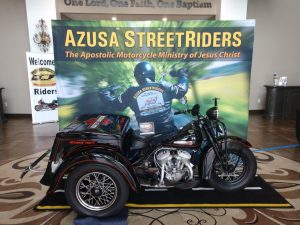


I would like to take the time to say thank you to the Maryville, Tennessee chapter for hosting the 2019 National Rally and doing a tremendous job. What a great time in fellowship and riding we had. Our church services were amazing so powerful. Looking forward to 2020 National Rally in Nashville,Indiana. Michael Theodore National Road Captain